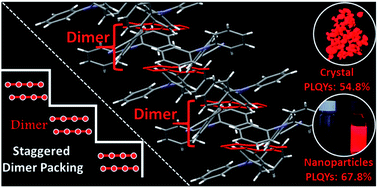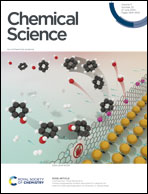Deep-red fluorescence from isolated dimers: a highly bright excimer and imaging in vivo†
Abstract
Restricted by the energy-gap law, the development of bright near-infrared (near-IR) fluorescent luminophors in the solid state remains a challenge. Herein, we report a new design strategy for realizing high brightness and deep-red/near-IR-emissive organic molecules based on the incorporation of a hybridized local and charge-transfer (HLCT) state and separated dimeric stacks into one aggregate. Experimental and theoretical analyses show that this combination not only contributes to high photoluminescent quantum yields (PLQYs) but also significantly lessens the energy gap. The fluorophore BTA-TPA exhibits excellent fluorescence performance, achieving a PLQY of 54.8% for the fluorescence peak at 690 nm, which is among the highest reported for near-IR fluorescent excimers. In addition, because of its bioimaging performance, the designed luminophor has potential for use as a deep-red fluorescent probe for biomedical applications. This research opens the door for developing deep-red/near-IR emissive materials with high PLQYs.



 Please wait while we load your content...
Please wait while we load your content...